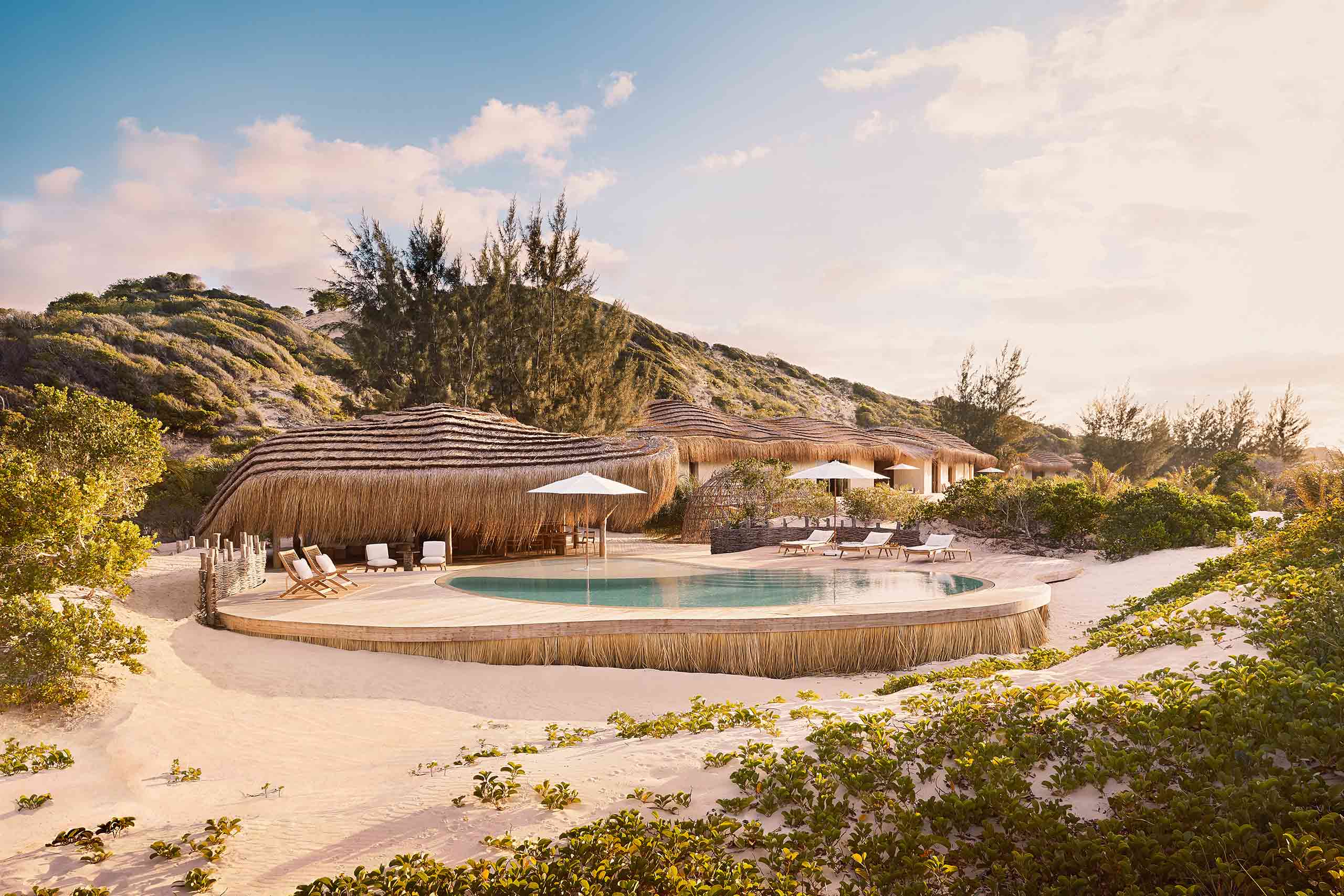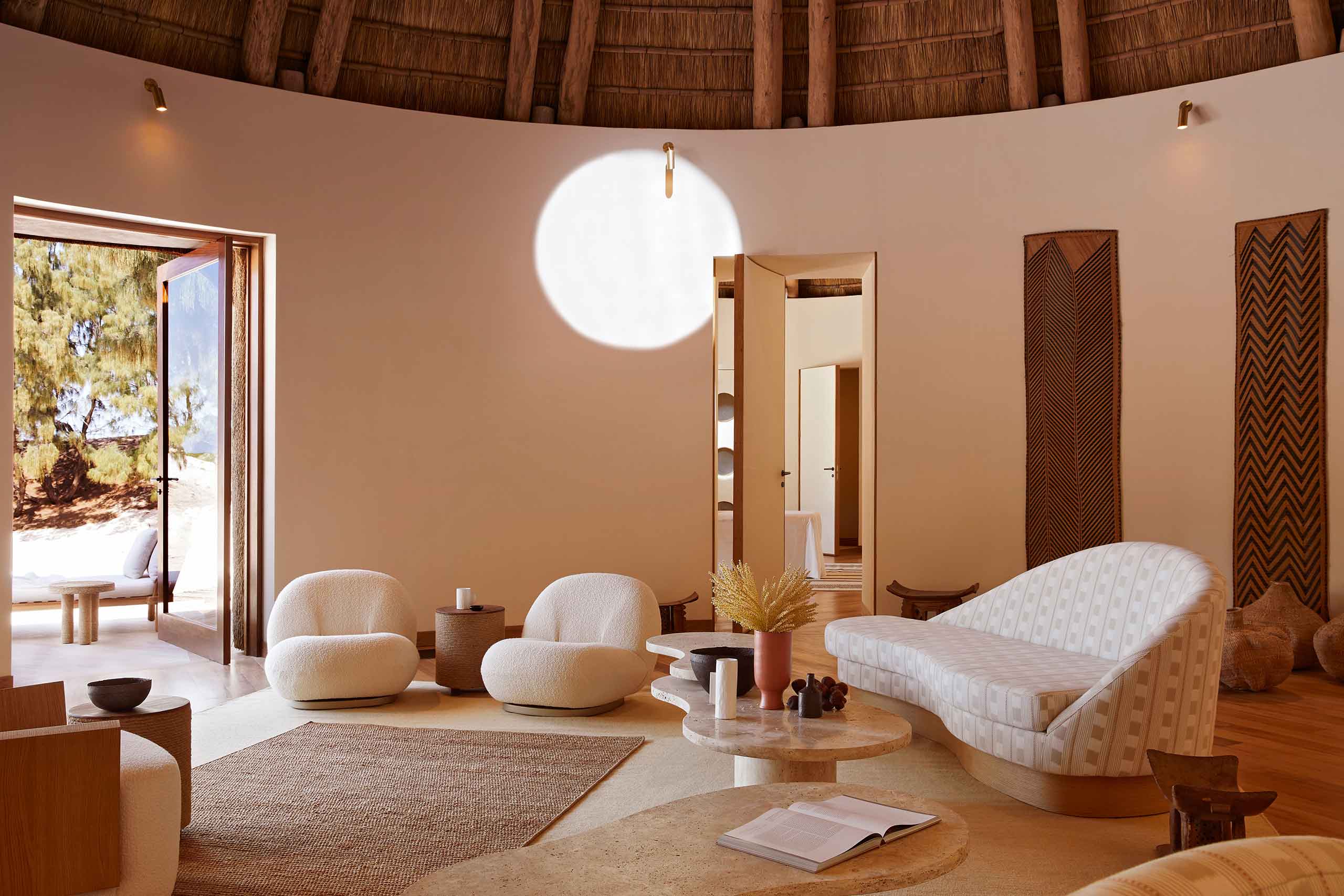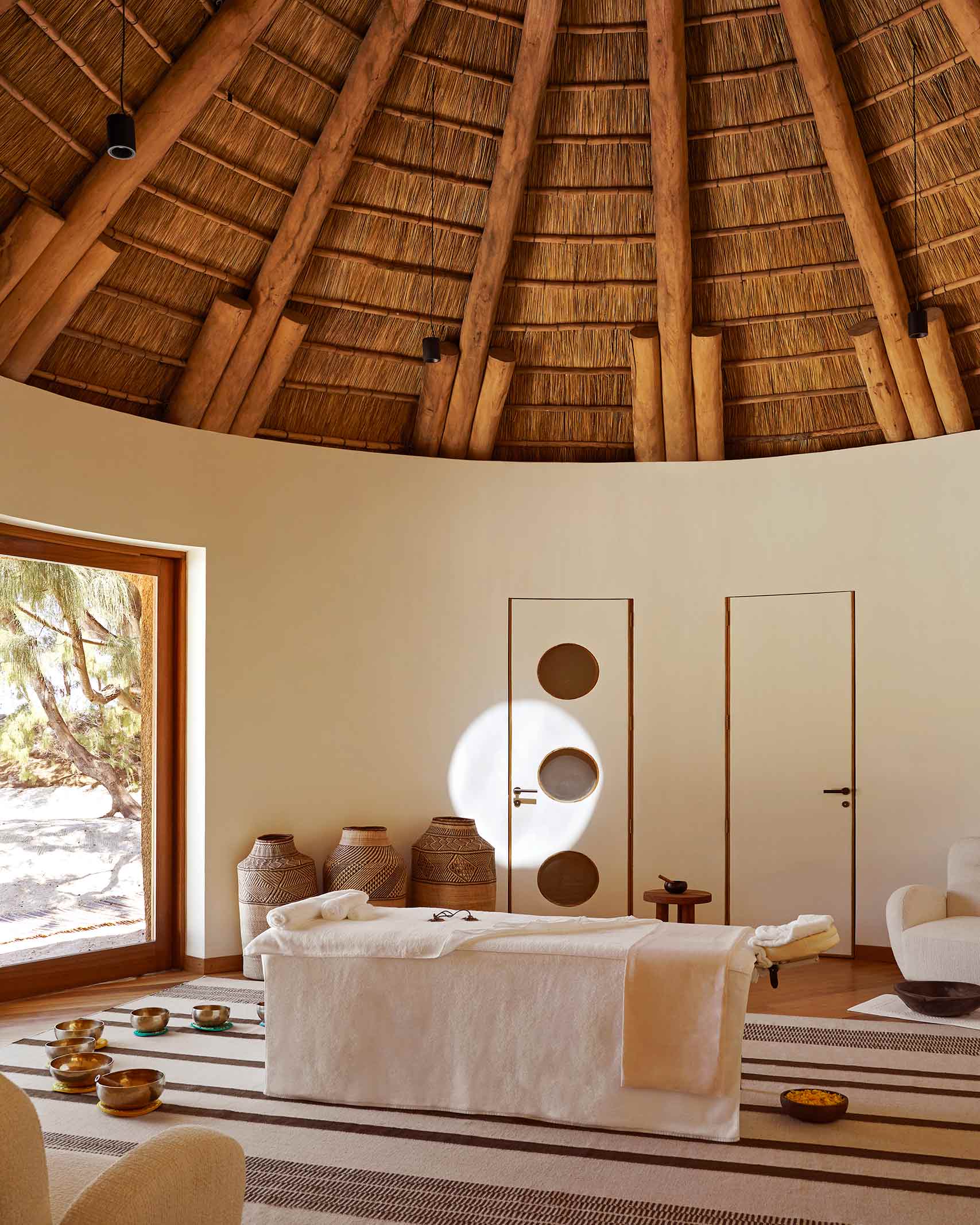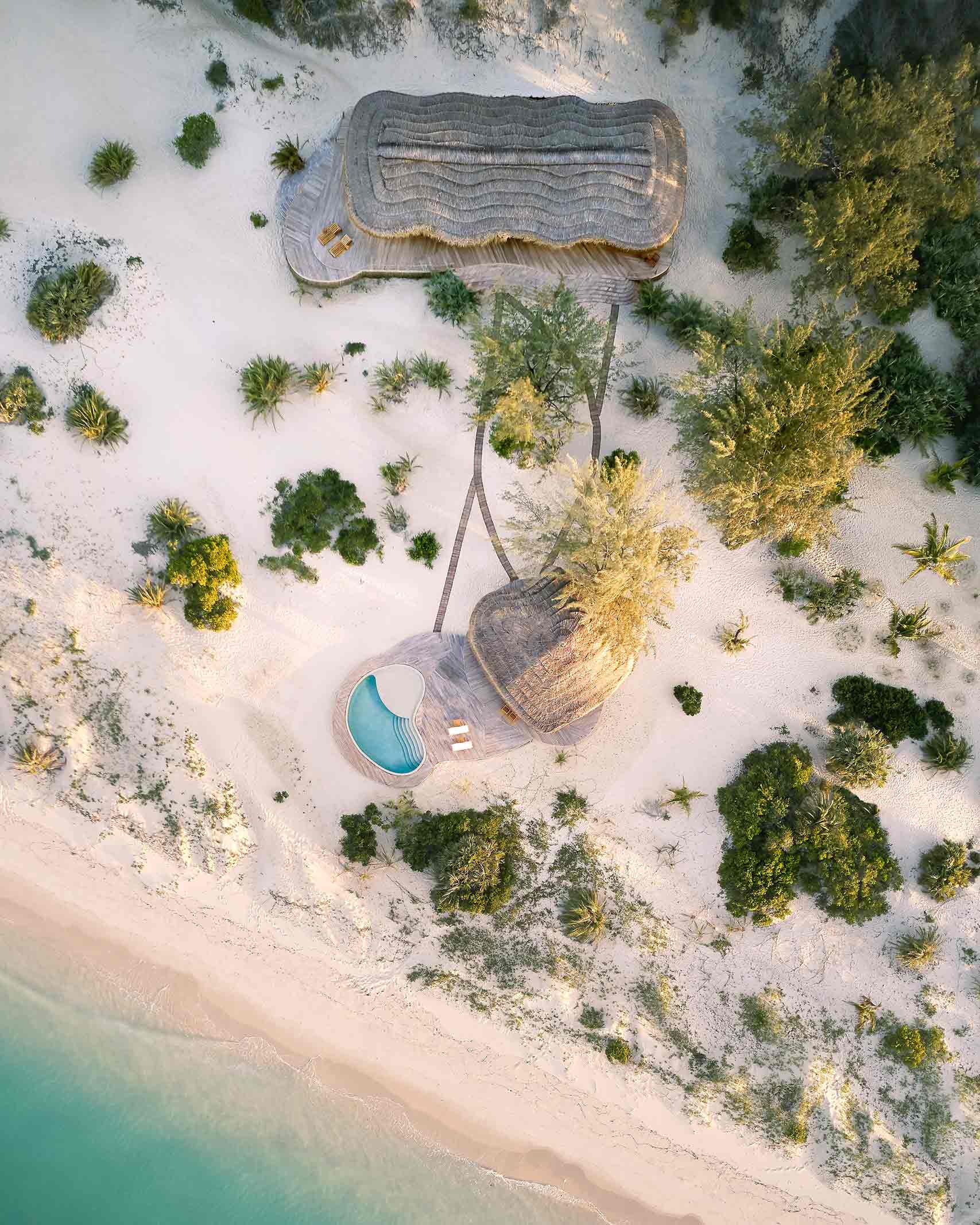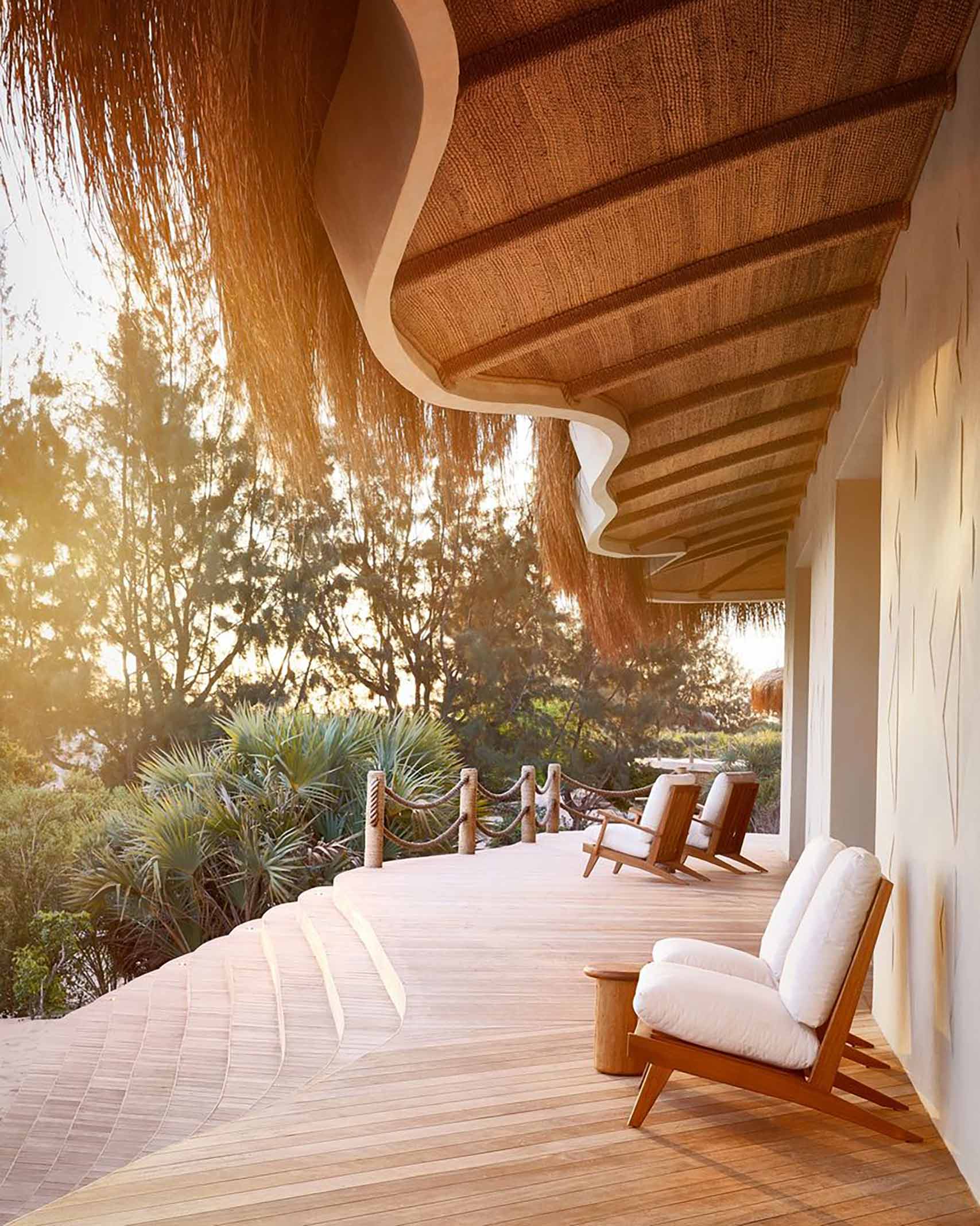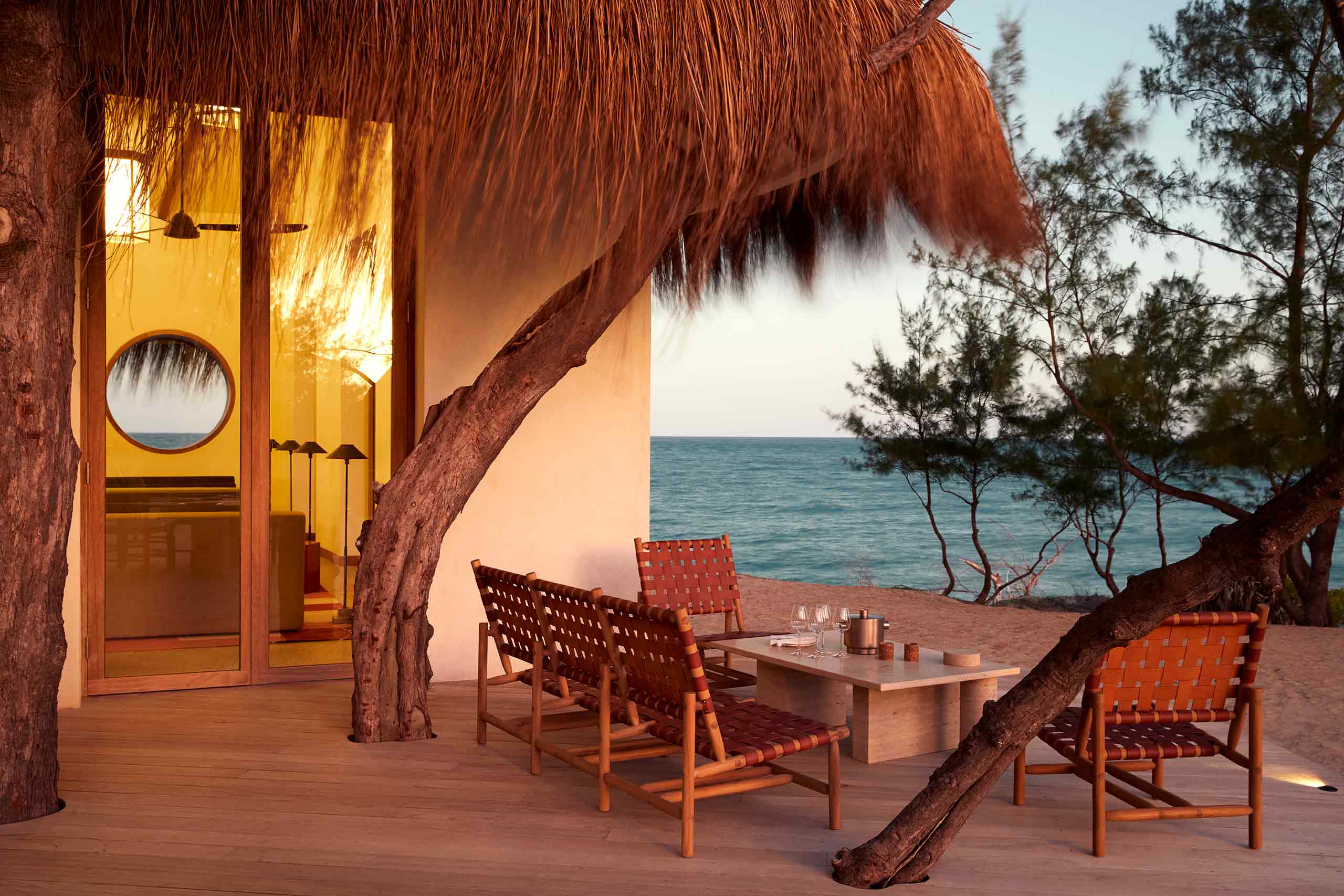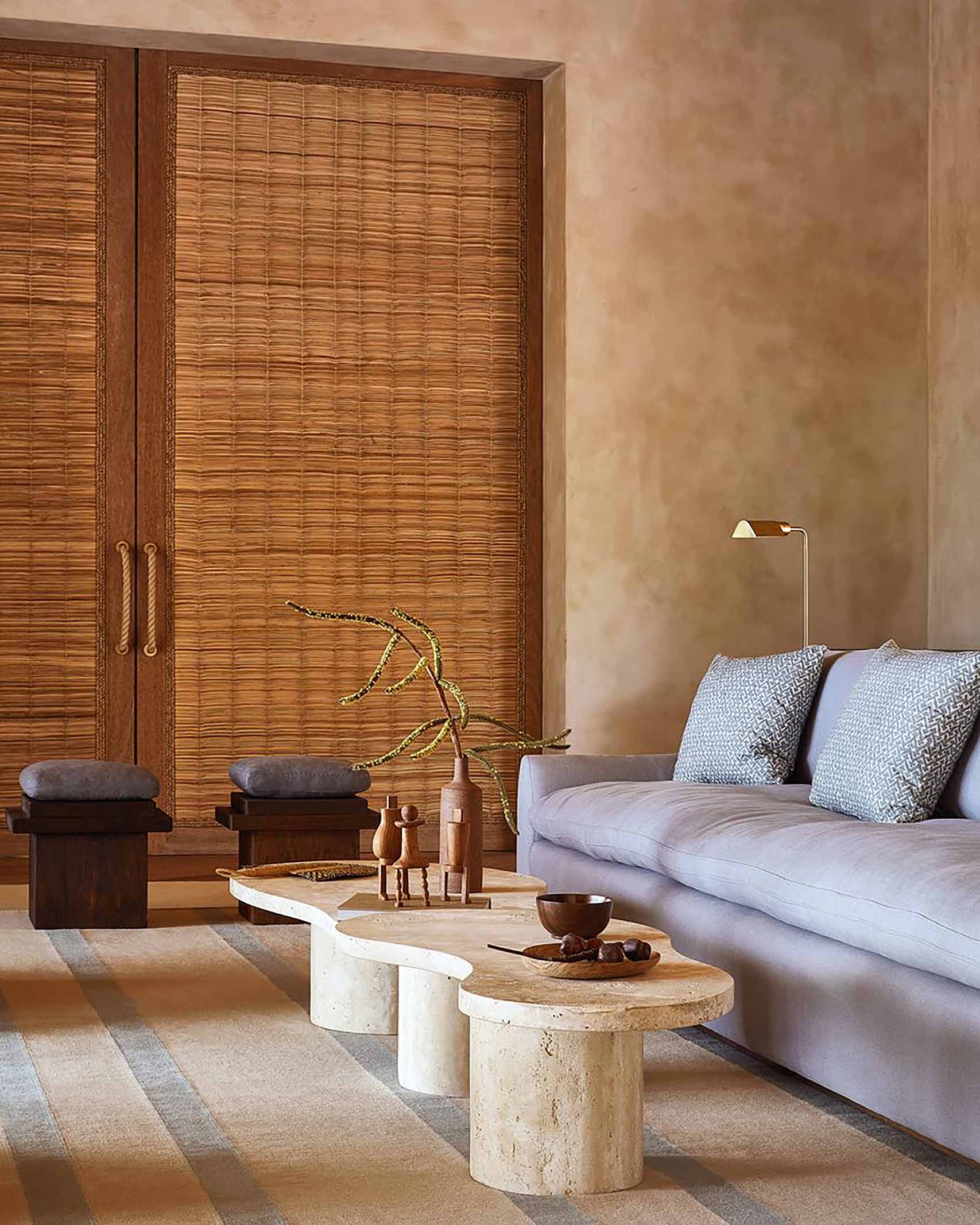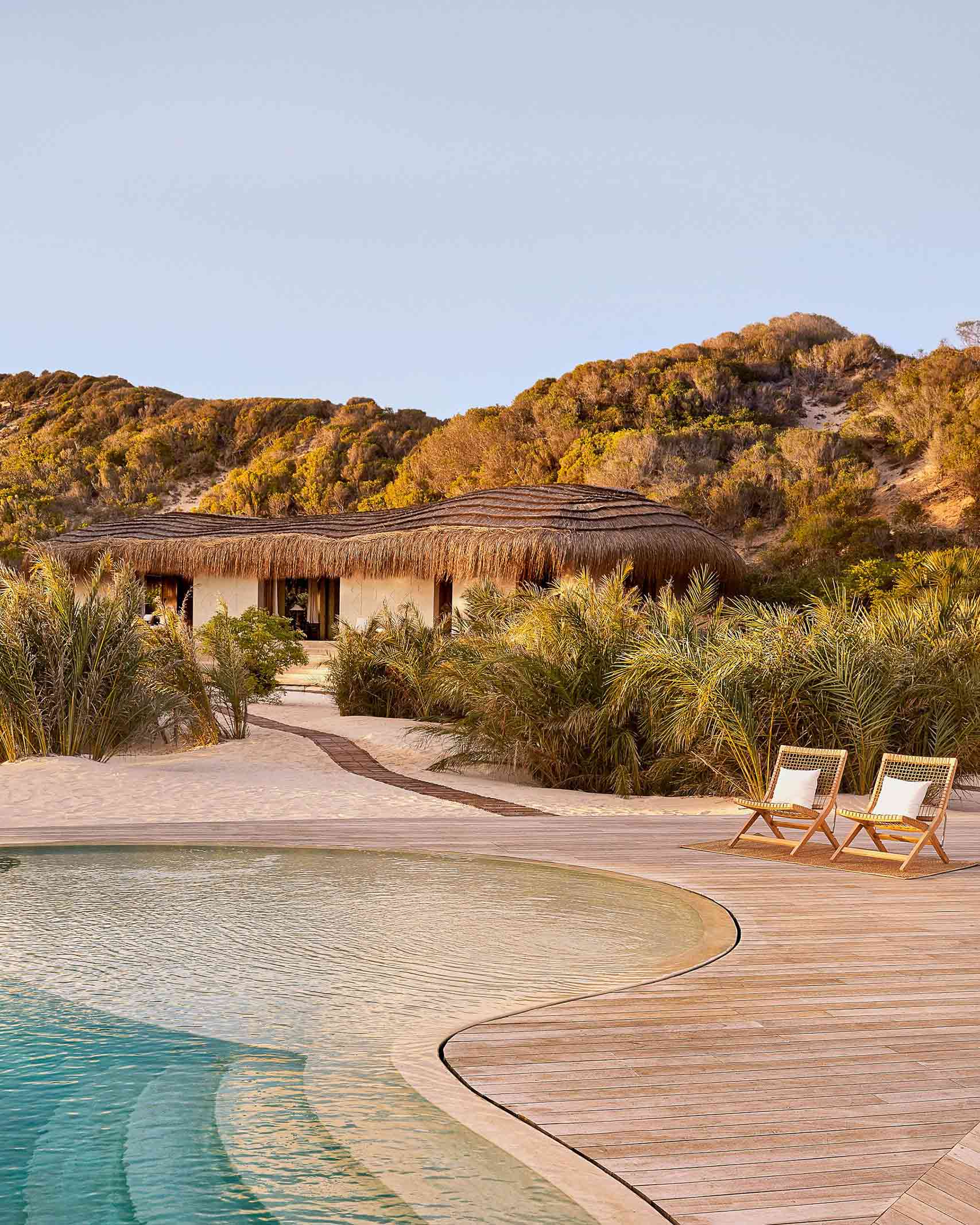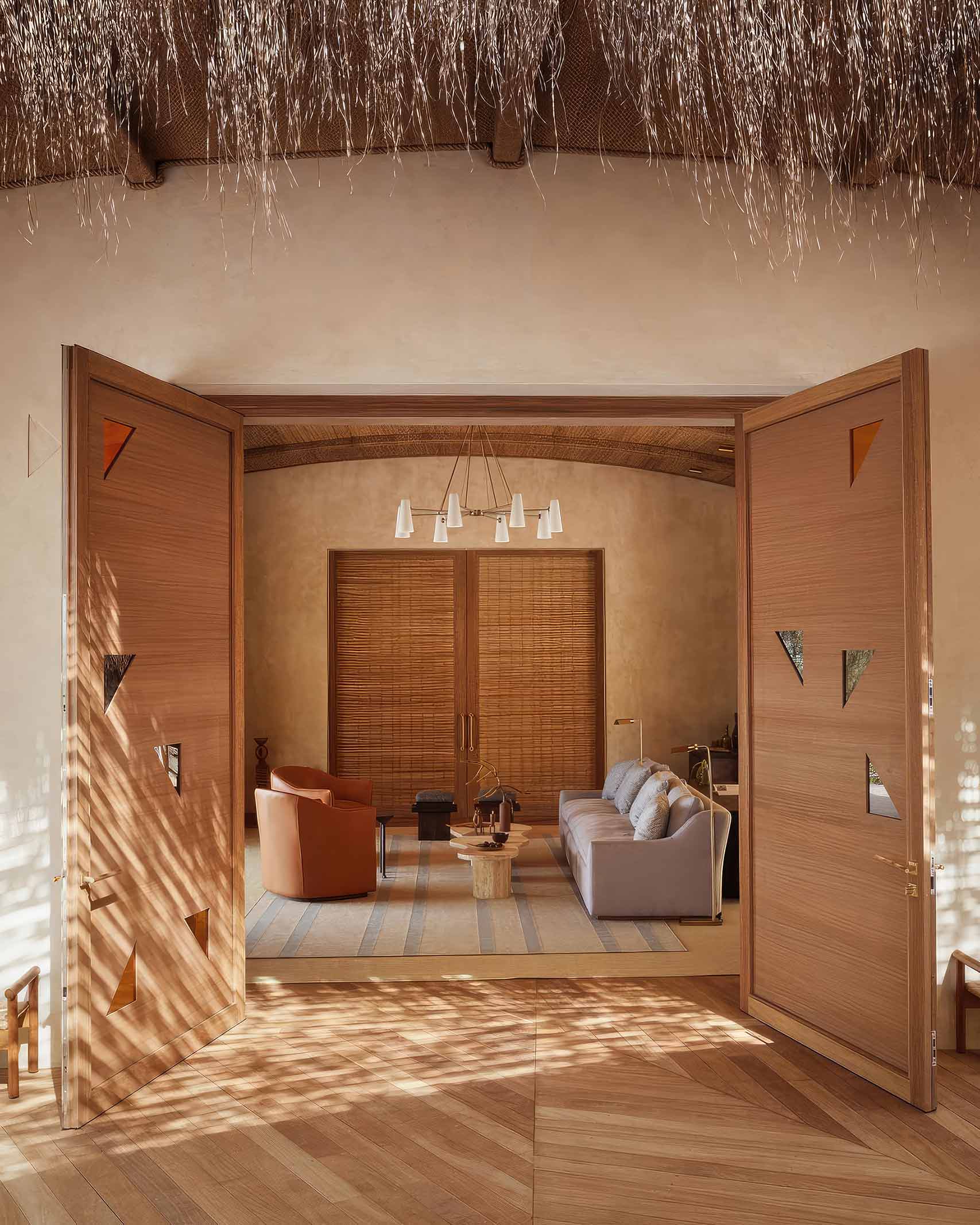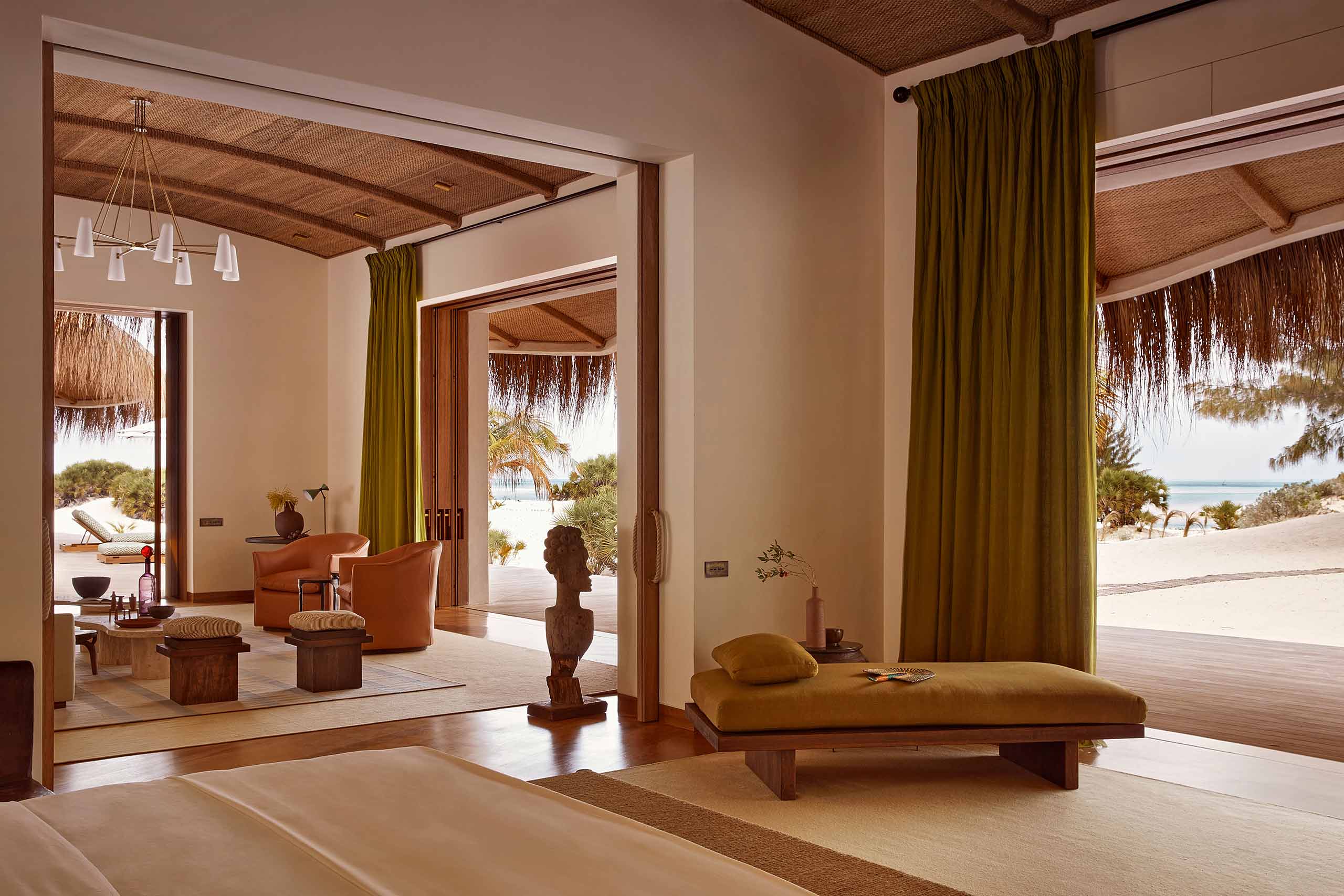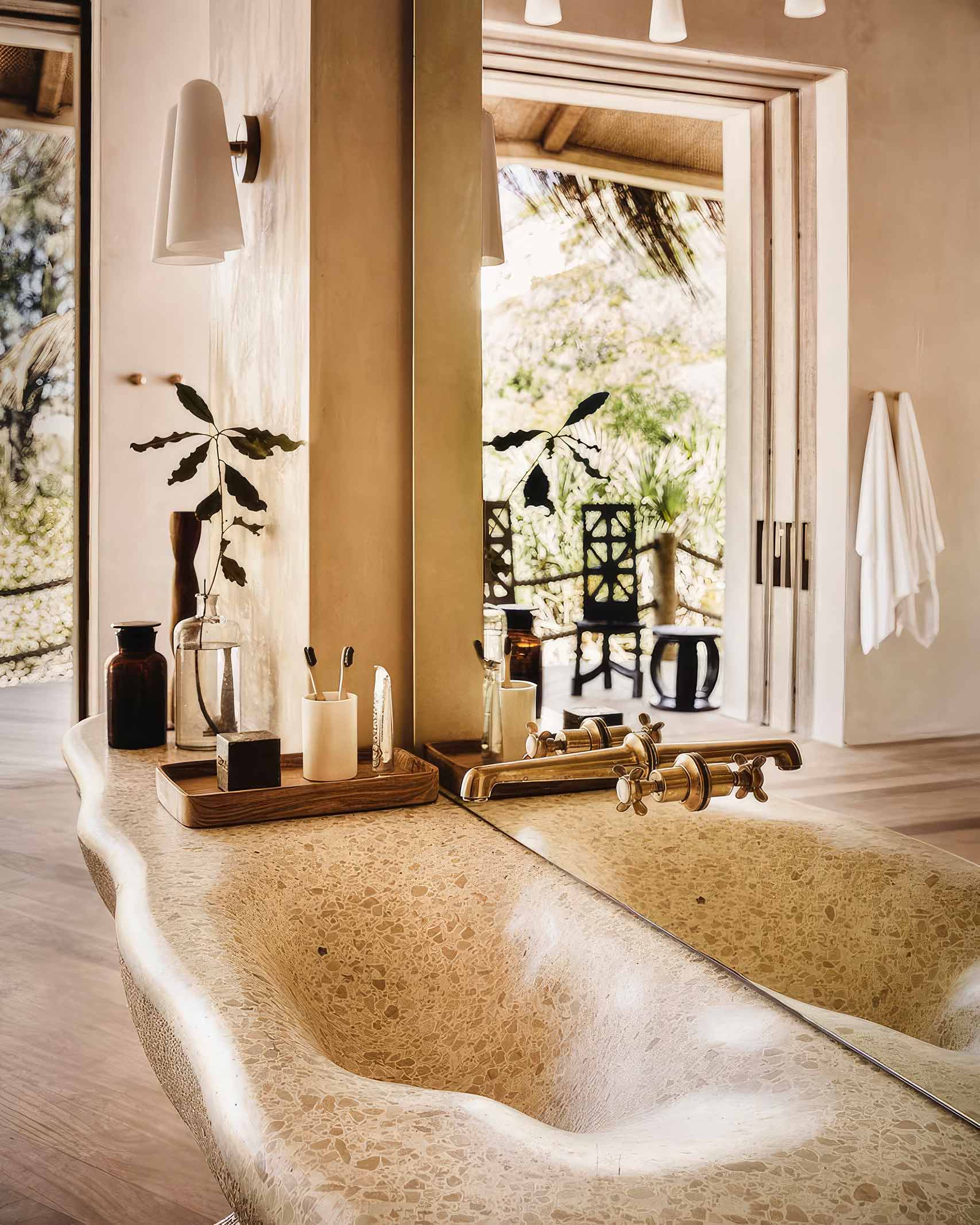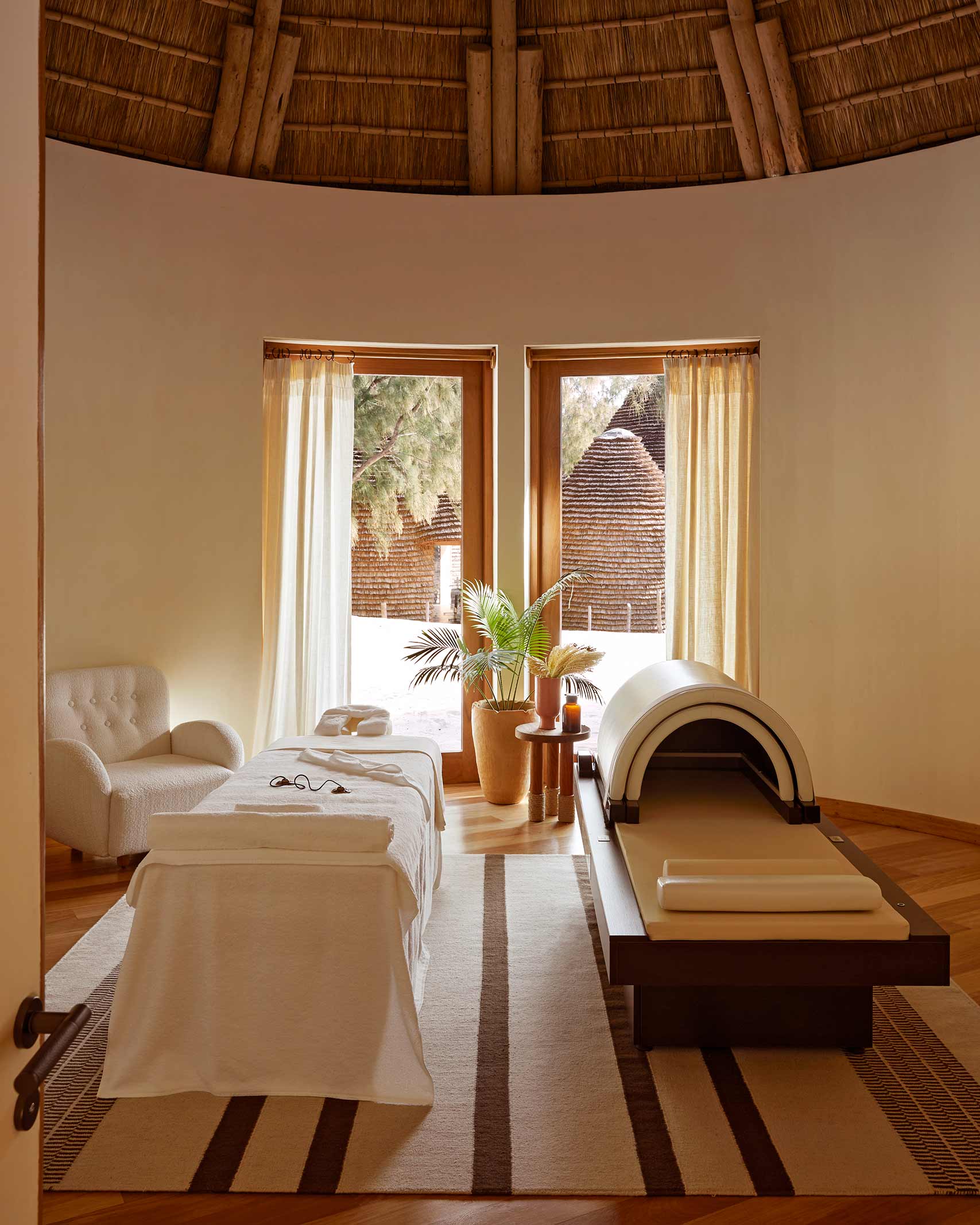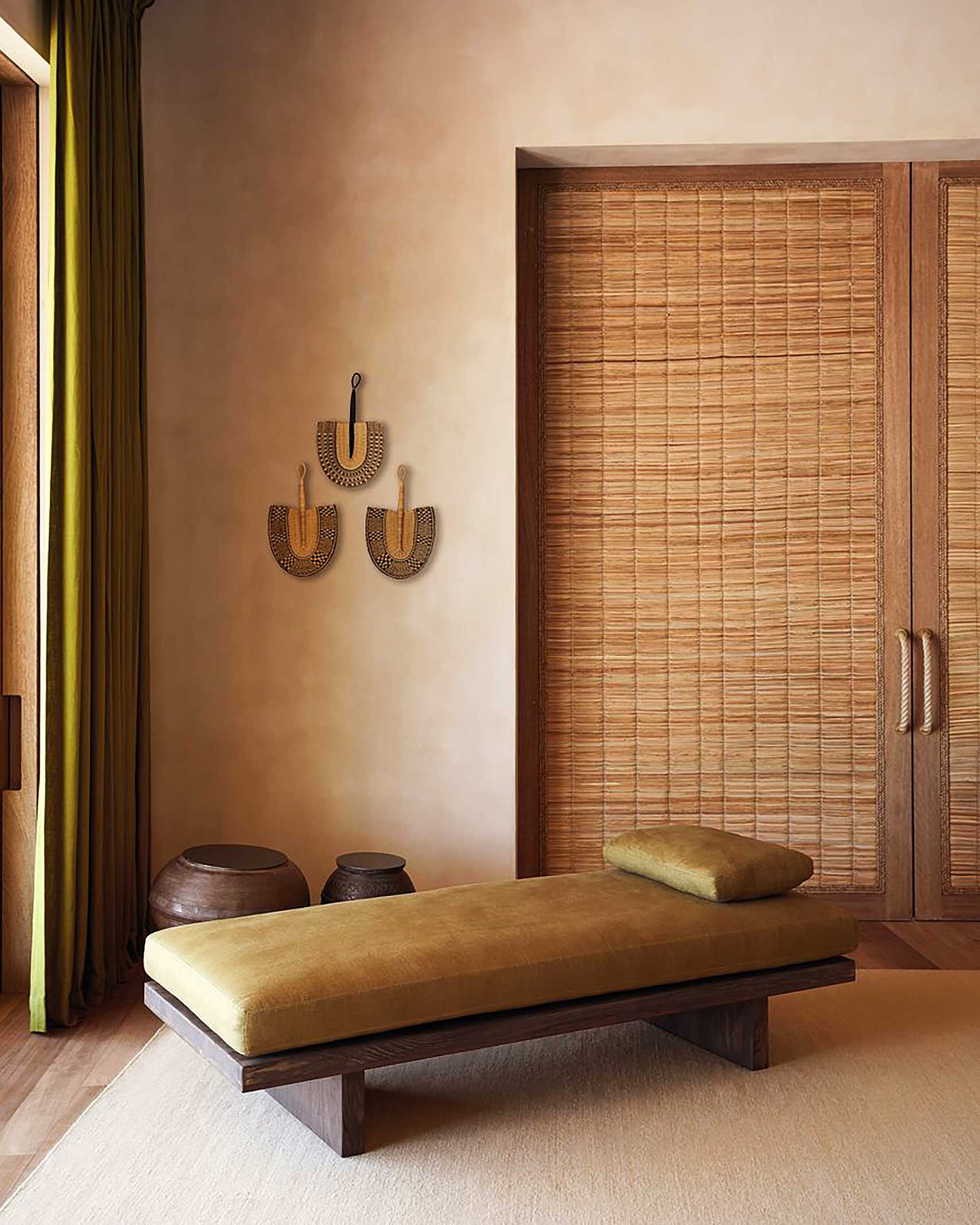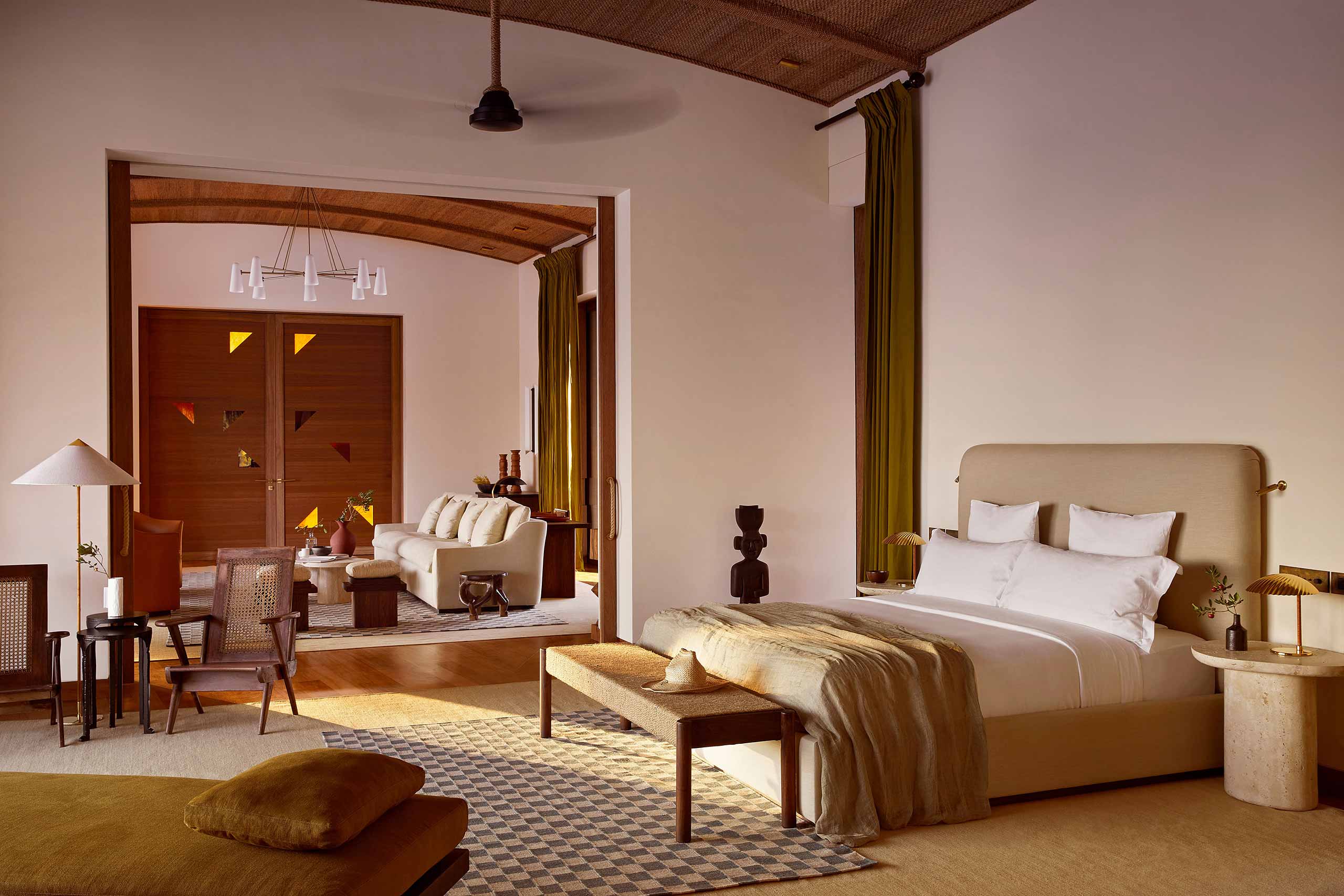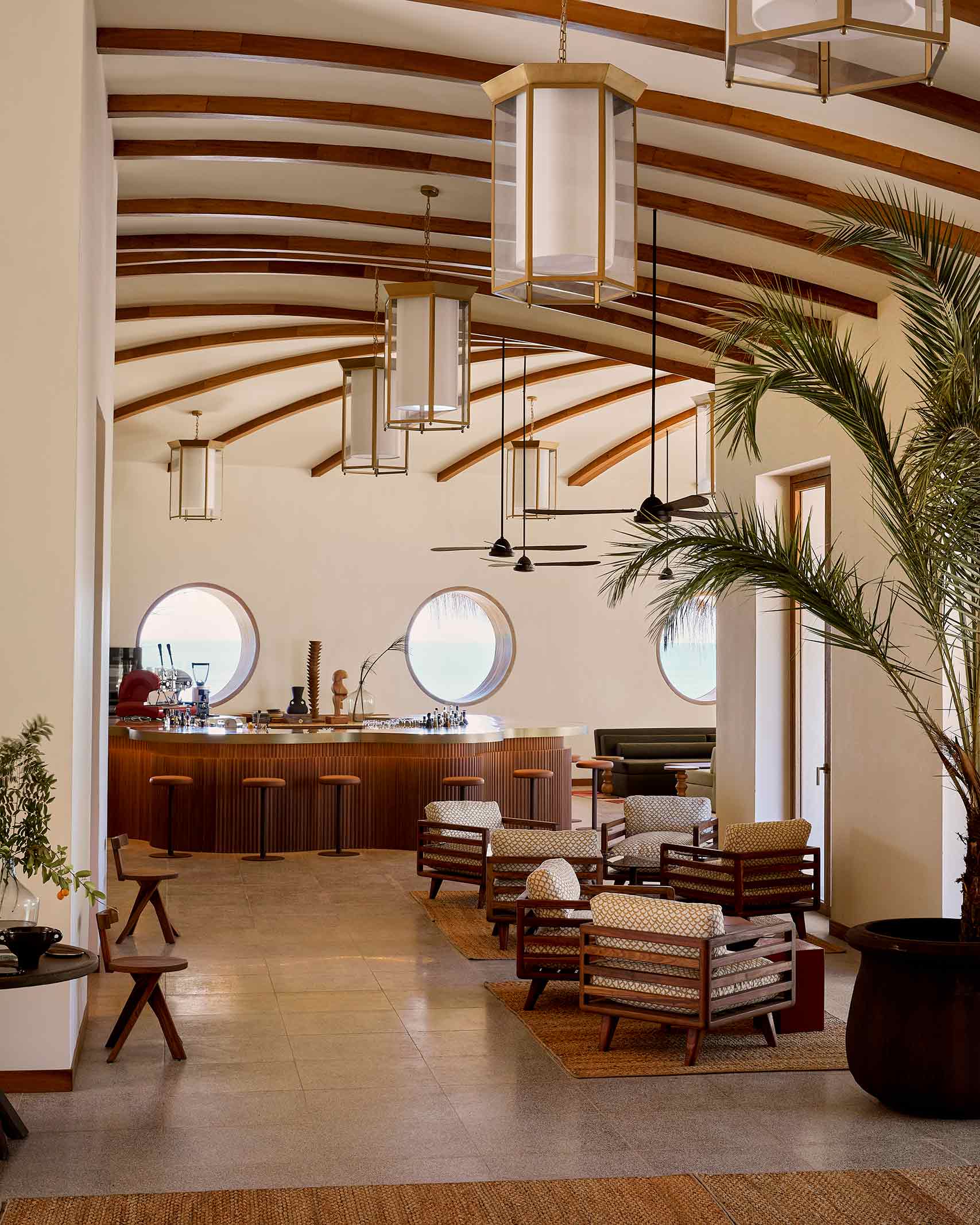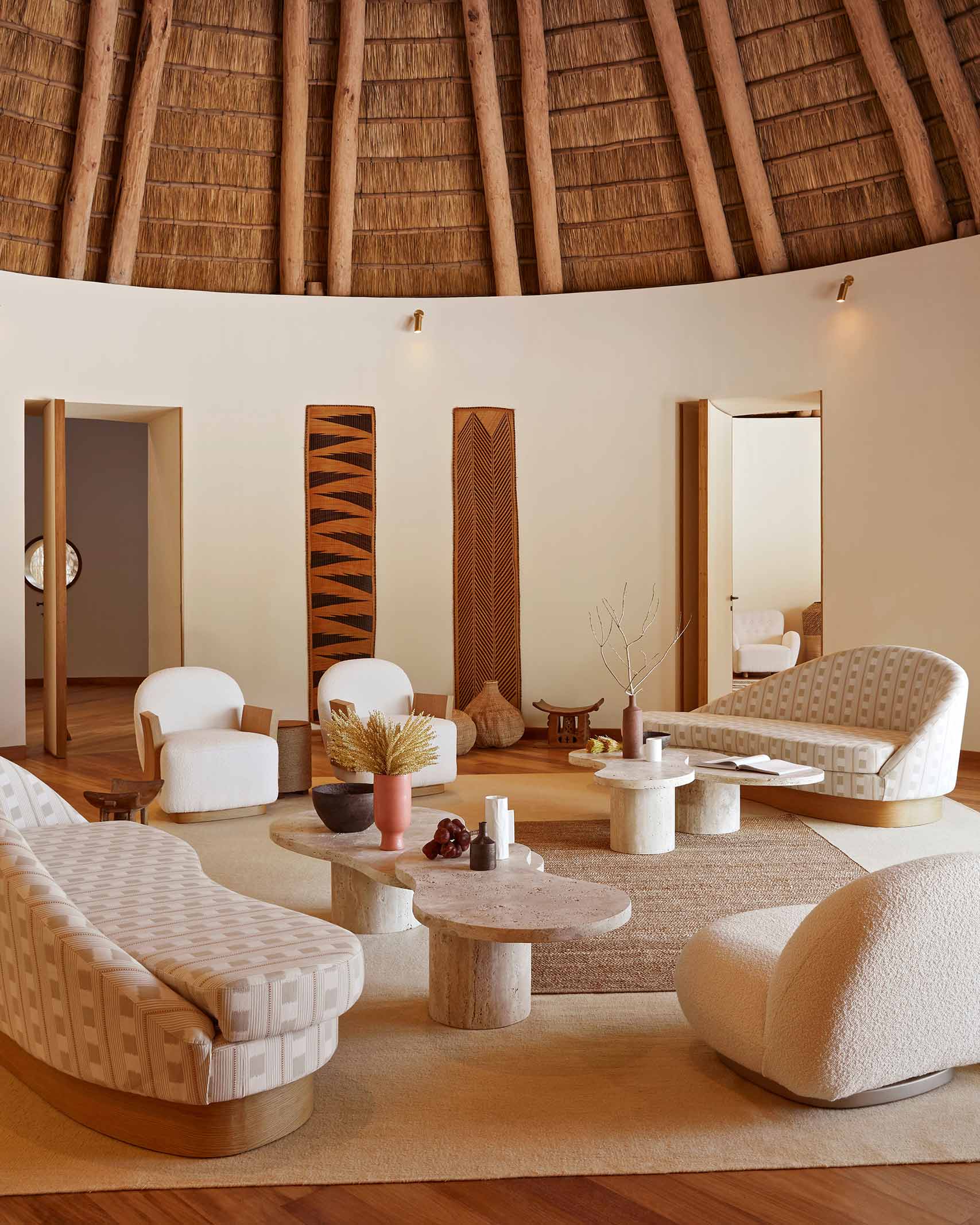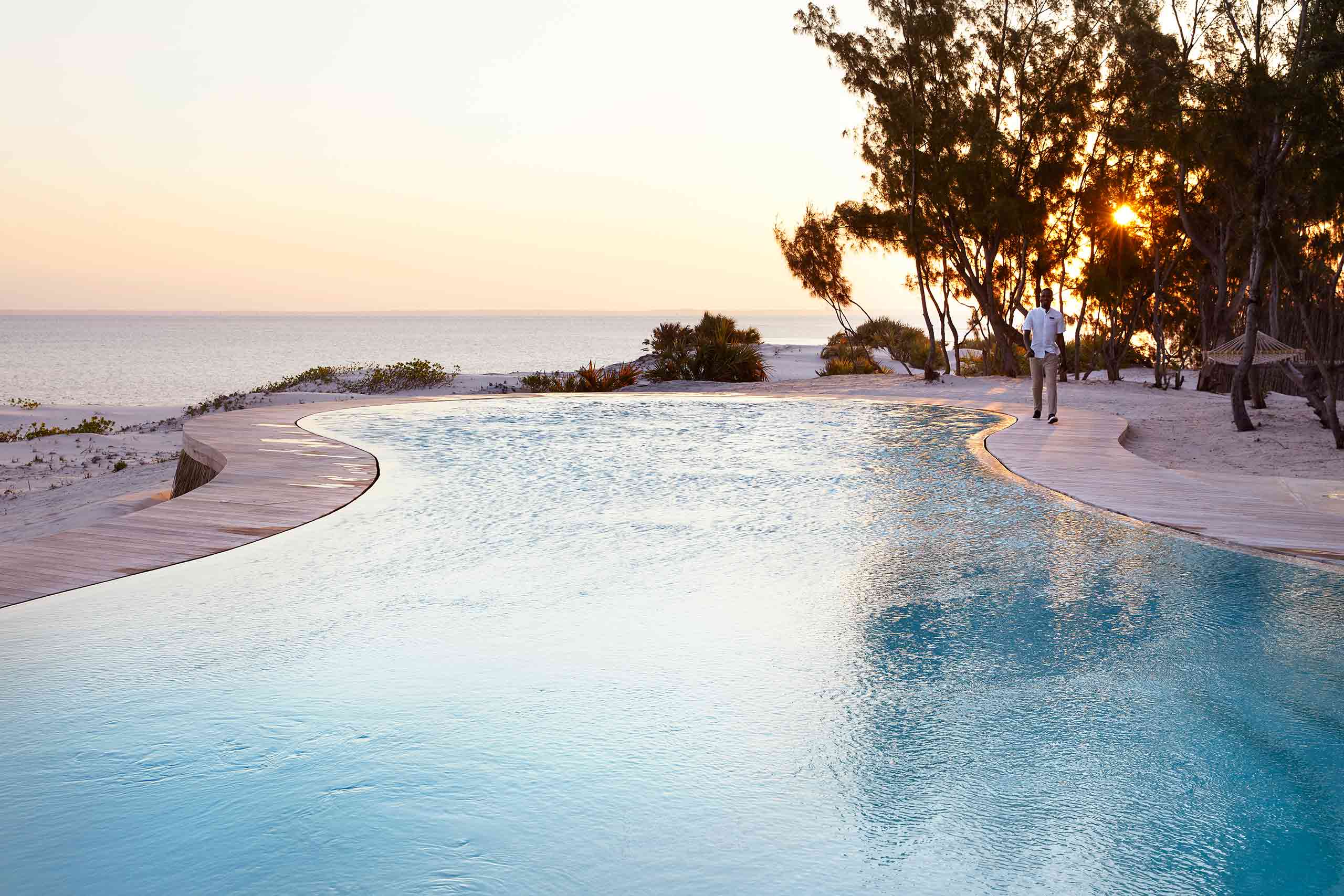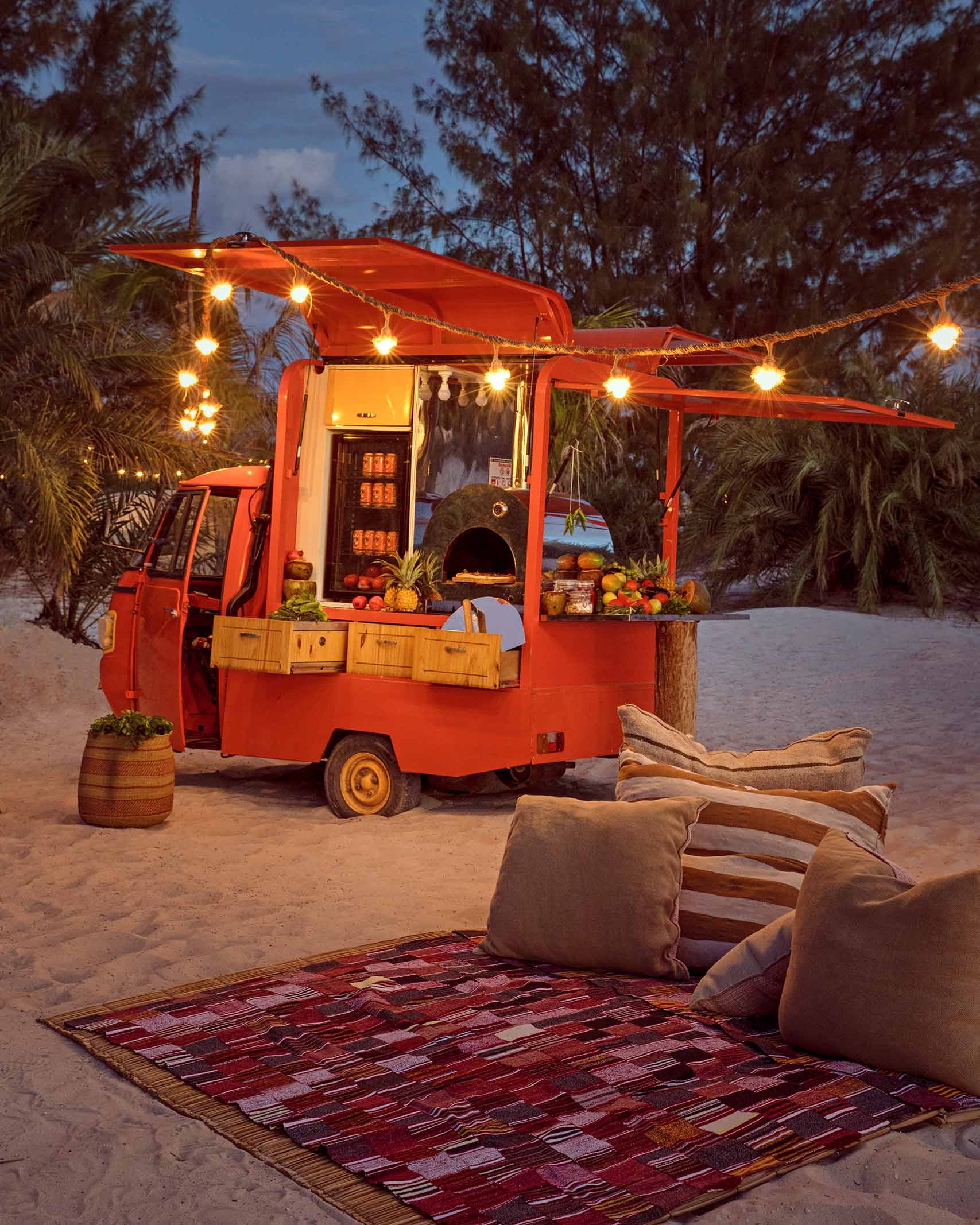Developed in tandem with its own ground-breaking marine-research non-profit, the blissed-out beach resort Kisawa Sanctuary is a peerless new showcase for the phenomenal potential of Mozambique’s Indian Ocean coastline.
Friends from South Africa (the well-heeled, well-travelled ones) had told us about the beaches. “Unmatched!” they insisted. “The best in the world,” they confessed in earnest reverence, eyes glinting as if imparting an important secret the world was not yet allowed to know. Well, the secret is out. With dunes as soft as setting powder and an ocean of tie-dyed blues as far as the eye can see, we can confirm it’s true – Mozambique’s beaches are pinch-me pretty, the stuff screensavers are made of.
But the beaches are just part of what makes Mozambique special, especially now, at such a promising time. After gaining independence from the Portuguese in 1975 and the ensuing civil wars, which were waged until the early 1990s, Mozambique is in a young and optimistic era of growth and development. While it has the wildlife for safaris (Zinave National Park is now home to the Big Five), much of the associated infrastructure is lacking, and most of the top-notch outfitters have yet to arrive. However, talk is swirling. We hear (as yet unsubstantiated) rumours that Aman Resorts is looking at land, and Wilderness (formally Wilderness Safaris) has also been name-dropped as a prospect. Meanwhile, andBeyond already has one property in Mozambique and may even create a second.

This story first appeared in The Experientialist Awards Issue 2025, available in print and digital.
Subscribe today or purchase a back copy via our online shop.
In these early days, such talk must be taken with a grain of salt (or silken sand, as it were), but it’s all very encouraging, even more so because Mozambique is also a young country in terms of population (two-thirds of Mozambicans are under the age of 25, according to UNICEF) and is regarded as being one of the more LGBTQ-friendly African nations, having decriminalised same-sex relationships in 2015. Recent polls suggest there is now moderate support for equal rights, but with public displays of affection – whether between a gay or a straight couple – generally considered inappropriate, especially in less cosmopolitan areas, discretion is always the best policy. That said, for experientialists, now is a fascinating time to visit, to see the country begin to come into its own.
But back to the beaches – because, yes, they really are unmatched. With a shoreline stretching 1,675 miles (2,700km) – longer than North America’s West Coast – Mozambique is a nation of them. While we can’t speak for the whole country, we can recommend the southern tip of Benguerra Island, one of the barrier islands that make up the Bazaruto Archipelago. This happens to be the site of one of the most impressive new hotels in the world, Kisawa Sanctuary, which opened in November 2021.
If the eight-room, 2,000-acre Kisawa Sanctuary looks like something out of a dream — that’s because it is. Created in conjunction with – as well as to fund – Africa’s first permanent ocean-research centre, the non-profit Bazaruto Center for Scientific Studies (BCSS), the uber-luxe hotel springs from the big-hearted imagination of founder, creative director and all-round aristocrat extraordinaire Nina Flohr (go ahead and Google her – she’s very impressive.) Flohr first created and funded BCSS, which opened in December 2017, to study marine ecosystems in Eastern Africa, then later opened Kisawa Sanctuary as a purpose-driven hotel to fund the research centre directly as one of its partners. Some examples of BCSS research include habitat mapping, locating and tagging certain migratory species, as well as conducting marine-debris surveys and removals. Depending on the time of year – and which scientists are on site, as around 15 from all around the world can be on location at any given time – Kisawa guests can even shadow experts for a day and assist with activities such as seawater analysis aboard BCSS’s research vessel. All information is open source to support overarching goals of sustainable development, and recent achievements include new scientific papers in respected journals and self-sustaining social change on Benguerra Island (such as sustainability training programmes and garden expansions).
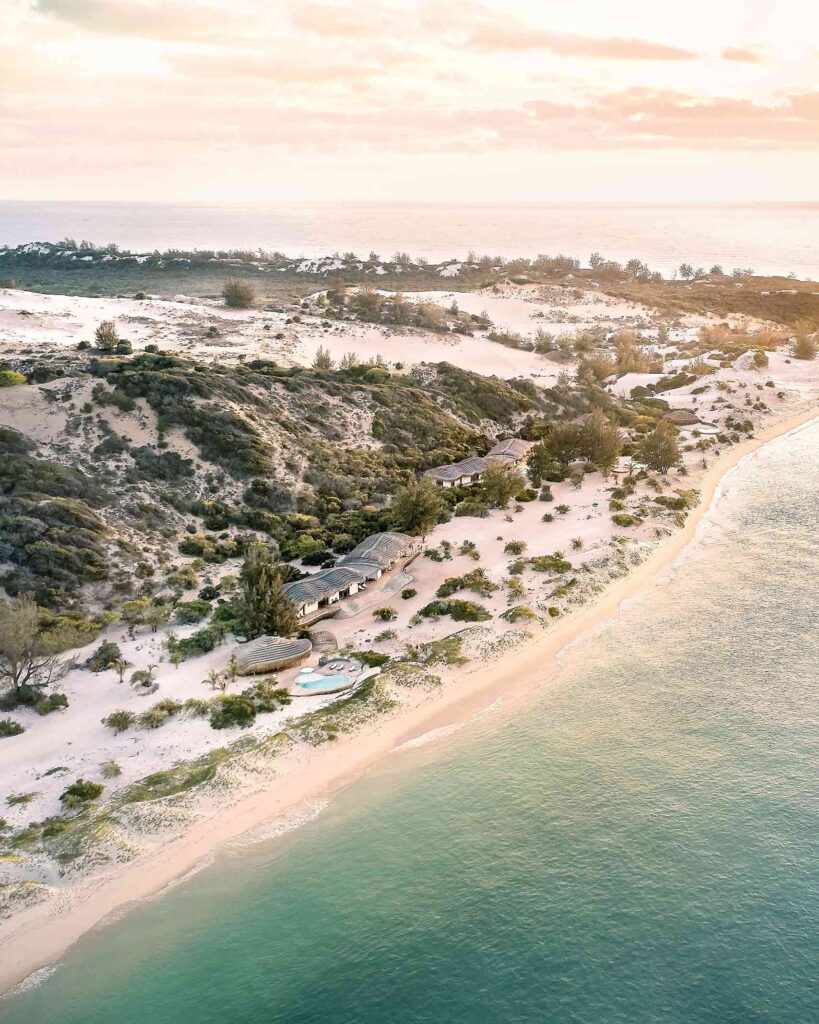
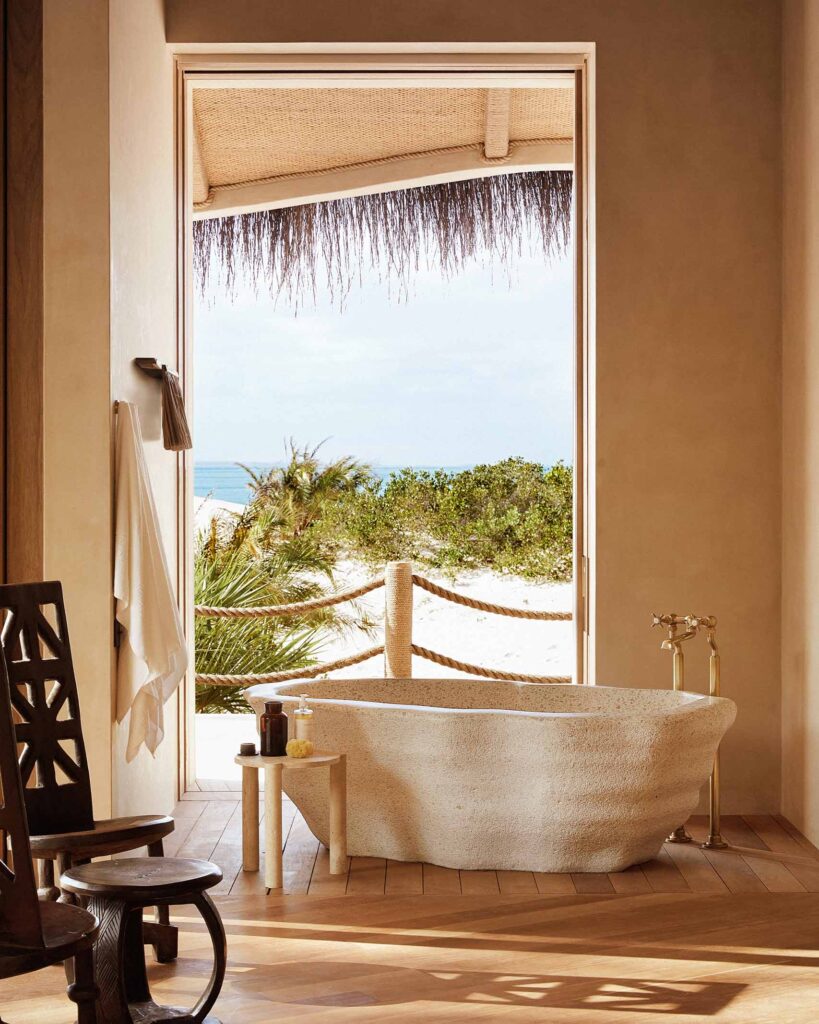
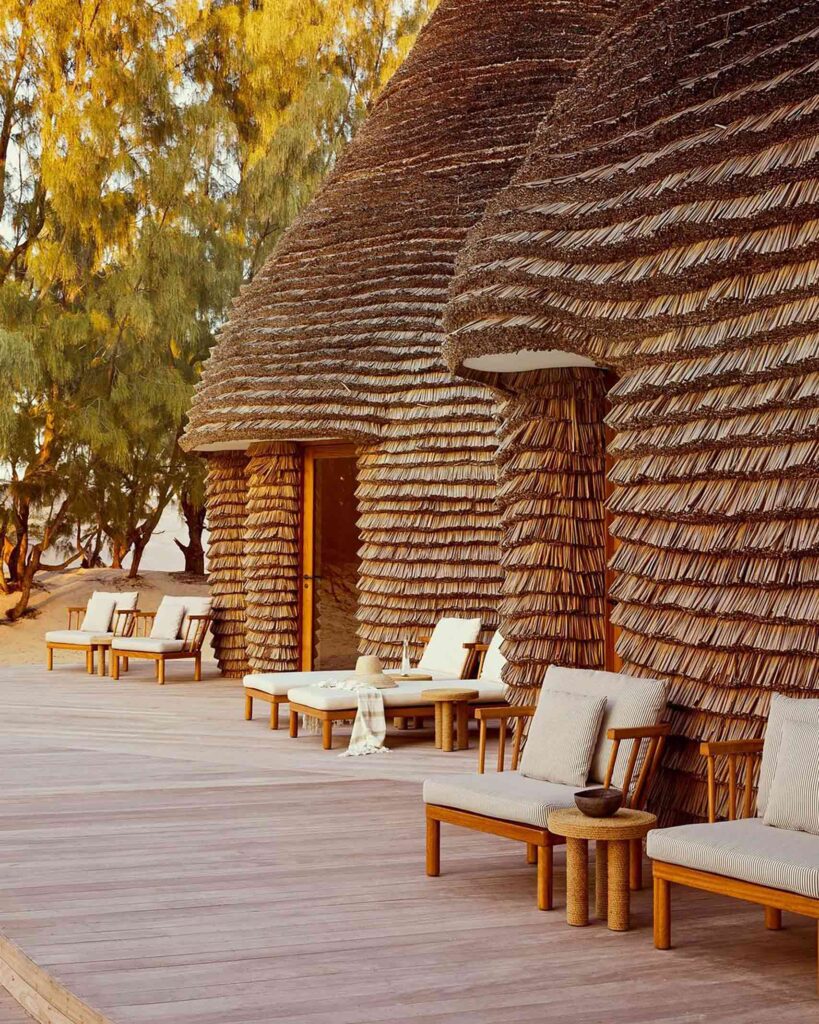
In the local Xitsonga language, ‘kisawa’ means unbreakable, and the project’s seven-year development was driven by unbreakable dedication to not only the environment but also the 2,000-strong local community, some of whom now work on site, including Benguerra local Querino Huo. Currently acting as guest activity manager, Huo was one of Flohr’s very first hires.
“I would say Kisawa Sanctuary employs 75 per cent local people from Mozambique,” he tells me as we walk along the foreshore in an attempt to get closer to a feathery flamboyance of flamingos stationed in front of BCSS. According to Huo, the locals feel proud of BCSS and the hotel, as many were a part of it from the start and are benefiting from jobs, training and social development. For example, 2,013 residents now have access to two new freshwater wells, created by Kisawa and BCSS.
“Our initial idea was to bring everyone from the island,” says Huo, who also serves as a community liaison with the local islanders, “but for this level of hospitality, you need to bring in overseas people to train. Now, it’s an experience exchange, and people come here to experience something.”
And what an experience. With pitch-perfect execution, Kisawa has the air of a money-is-no-object private island. Nothing is too much trouble. Nowhere is without photogenic appeal. And everything feels designed just for you. There are no missed beats.
Our trip started with a swift helicopter flight from Vilankulo (VNX), the international airport on the mainland, which offers non-stop flights from Johannesburg (JNB) in South Africa, as well as domestic flights from Mozambique’s capital, Maputo (MPM). This has plenty of inter-African connections, as well as intercontinental links such as Doha via Qatar Airways, Lisbon via TAP Air Portugal, and Istanbul via Turkish Airlines. Arrival by boat transfer, taking around 35 minutes, can also be arranged, though we’d argue it’s less fun than the 10-minute chopper hop.
On landing, we were welcomed by a fleet of pastel Mini Mokes, beachy-chic doorless jeeps that run – rather fast – on electricity. Each of Kisawa’s eight residences has a dedicated Mini Moke (ours was coral pink) to be self-driven or chauffeured by a dedicated butler (in our case, by the lovely Jay, from Nepal).
Plotted among eggshell-white sand dunes and coastal forests of whistling pines and milkwood trees, the residences, conjured by Flohr and her design studio, are far too vast to be called simply rooms or villas. Enfilade layouts thread living rooms into bedrooms and then into bathrooms larger than most city apartments. The design is all lean Modernist curves, with pan-African influences and natural materials such as native grasses and East African mahogany. Some building elements, including part of the residences’ foundations, were created by an on-site 3D printer, which uses a custom mortar of sand and seawater. The scale is impressive and everything is top quality, from door handles fashioned to look like nautical rope to barrel-vaulted ceilings covered in a weave of jute-like plant fibre. At high tide, a near-perfect beach is steps away from most residences (ours was Cove 5). For both beach and forest views, we recommend Cove 4, which sits on a small bluff.
While it would have been no effort to while away our stay in our residence, we ventured out for sustenance and adventure. In keeping with Kisawa Sanctuary as a whole, the cuisine is next level, and I feasted like a spoilt princess. Meals can be taken in the permaculture garden, strung with lanterns and tangles of passion-fruit vines, in the impressive Wine Room or on the beach, beside a warming bonfire. An old tuk-tuk (once used as a taxi in Vilankulo) is reborn here as a food truck serving Neapolitan-style pizzas. It can even be driven straight up to your residence, where the pizzaiolo will prepare your order for you.
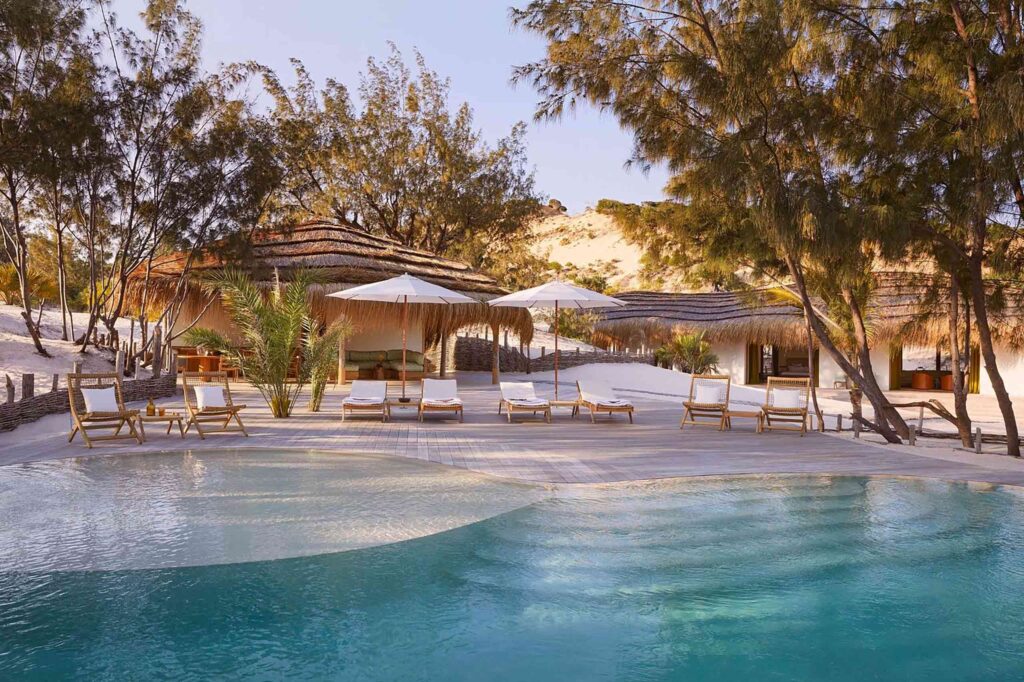
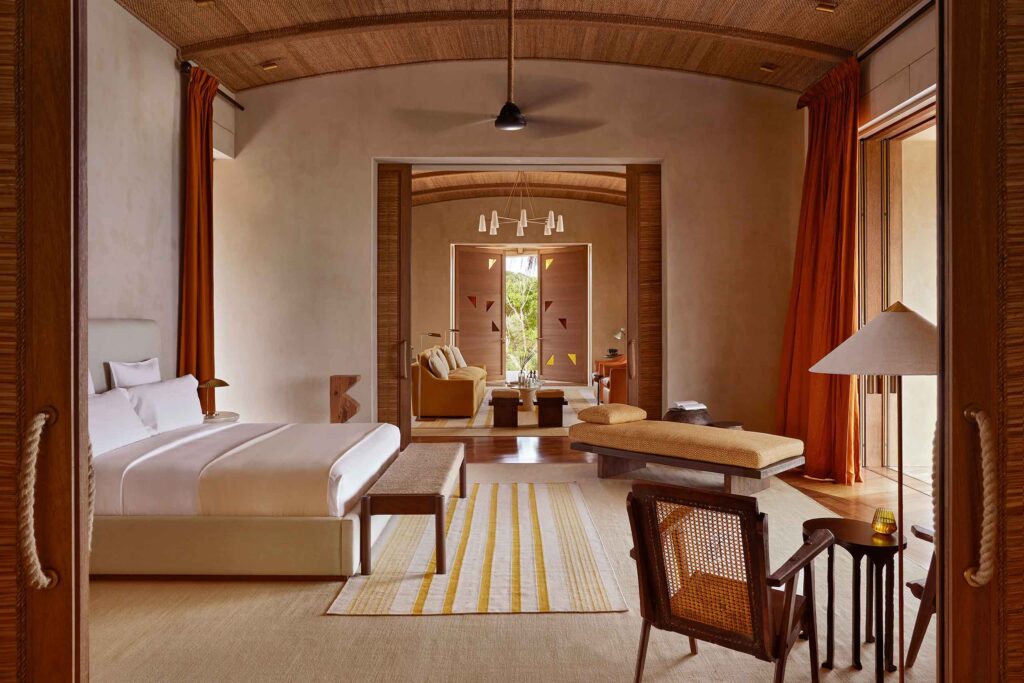
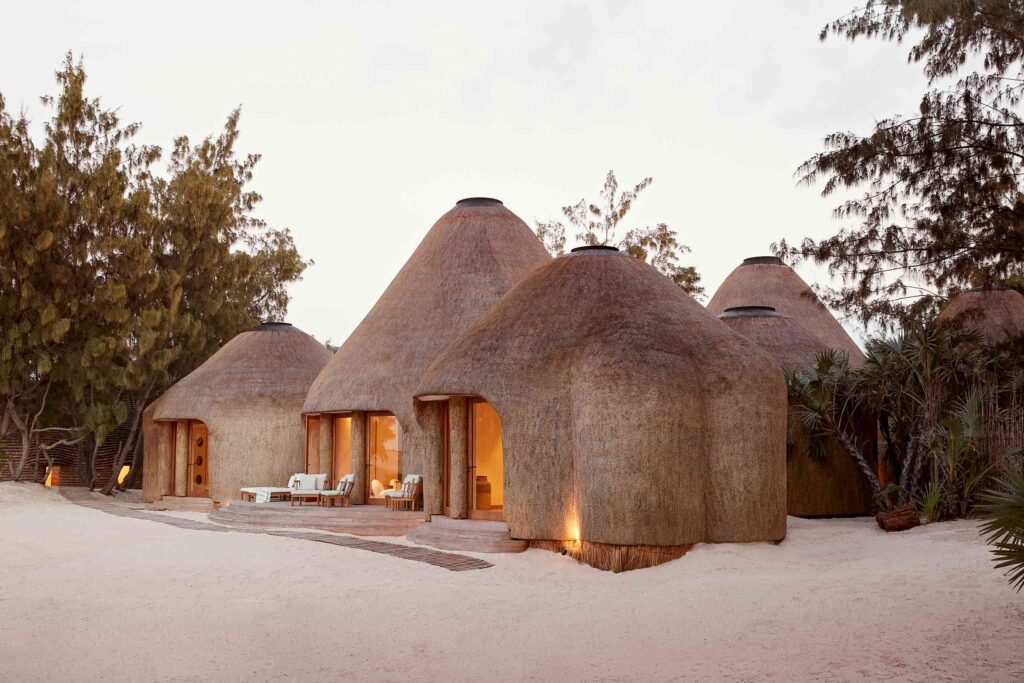
Then there are the ‘official’ restaurants: open-air Moussassa serves a sea-fresh bounty of Benguerra lobster with caper butter and prawn salads, the chilled-out beach bar Baracca includes Portuguese plates such as croquetes and feijoada stew, while the Main Terrace, an elegant affair (and perhaps the only place where shoes are recommended) has tables laid with starters of house-smoked serra (kingfish) carpaccio and mains of butter-tender sous-vide wagyu. Our favourite dishes were Mozambican, with local ingredients such as cassava, sometimes fired up with Portuguese influence. To add yet more sense of place, we’d have loved to have seen a Mozambican chef in the kitchen, alongside the talented South African Jean-Pierre ‘JP’ Nunez.
As well as being handsomely fed, we had a great choice of activities. Sunset sails on traditional fishing dhows, spotting rare manatee-like dugongs, snorkelling among lionfish and yellow snappers, hiking to brackish lakes filled with crocs…no wonder this place is a protected conservation area. At any time, guests can visit BCSS on the island’s northern side, just a short drive away down a sand road. We found one of the research projects was focused on recording the sounds of coral reefs as a way to diagnose their overall health, and we even got to take a peek inside the laboratory.
Other activities are sweet and simple. Meet Enda, who oversees Kisawa’s permaculture garden, and admire the blue heirloom pumpkins she grows. Join general manager Mathieu to spy seabirds swooping across the Red Dune. Or challenge food and beverage manager Lindani at the backgammon-like board game tchuva while sipping too many Dunes, a tropical cocktail made with tequila plus just-picked chilli and pineapple from the garden. (You can sweat these out the next day in the furnace-like Japanese Iyashi Dome in the property’s Natural Wellness Center spa, maybe before a treatment from Balinese masseuse Ayu.) As with any best-of-the-best hotels, the people — from the locals to the new arrivals — can, and here do, really elevate a stay.
It’s exciting to think about what’s to come for Mozambique on the tourism front, with all its immeasurable potential. But for the moment, Kisawa Sanctuary stands as an outstanding trailblazer and an unbreakable symbol of how it can and should be done.
Photography by Elsa Young and courtesy of Kisawa Sanctuary


